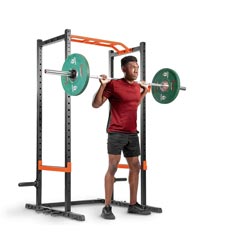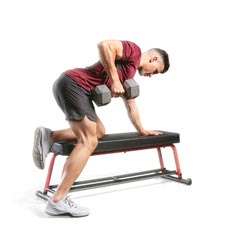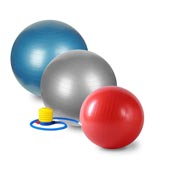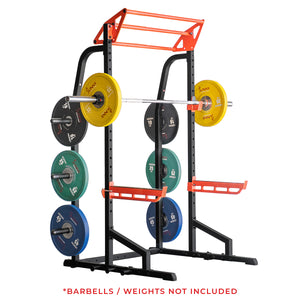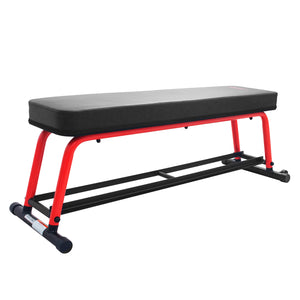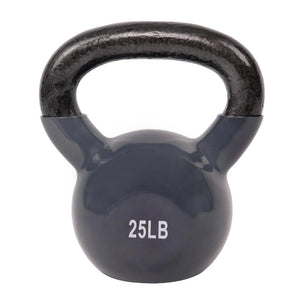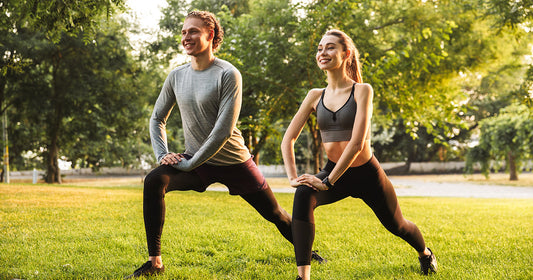Let’s face it: strength training has never been hotter. Everywhere you look, people of all ages, sizes, and genders are bodybuilding, powerlifting, doing CrossFit, calisthenics, P90X, and everything in between.
The question is, why? We know that strength training can improve the way you look in the mirror, but is there more to it than that?
The answer is a resounding yes. In this article, we’ll cover the top seven benefits to strength training (also called resistance training in this context) and how it can improve your health. We’re pretty sure that by the time you’re done reading, adding strength training to your exercise regimen will be the next thing on your to-do list.
1. Increased muscle mass and strength
Of course, we know that regular strength training can increase muscle size and strength.(1) Stronger muscles mean one main thing: better physical function and performance, whether for playing sports or picking up a five-gallon jug of water without getting injured. By that token, stronger muscles also result in more injury-resistance.(2)
2. Improved bone density
A slightly less well-known benefit of strength training is its ability to increase bone density. The thing is, strength training “builds lean mass,” right? Well, bones are lean mass too! Increased bone density helps prevent osteoporosis and fractures, and resistance training has even been found to improve bone density in people with osteoporosis.(3)
3. Better balance and coordination
Falls account for approximately three million injuries among older adults that require emergency medical treatment each year.(4) By training the muscles that support your joints, strength training can improve balance and coordination, reducing the risk of falls and injuries. Strength training was even shown to increase balance better than traditional balance training such as standing on one leg or seated Swiss ball exercises.(5)
4. Improved cardiovascular health
Regular strength training can also improve heart and lung function, thereby contributing to better cardiovascular health.(6) This concerted effort strengthens the heart as well as reduces pressure on the arteries, resulting in better heart health.
5. Weight management
As we know, strength training can increase muscle mass, which in turn increases metabolism, allowing you to burn more calories at rest.(7) One pound of muscle burns six calories per hour, whereas one pound of fat only burns two calories. So, in other words, muscles burn more calories and therefore prevent them from being stored as fat!
6. Mental health benefits
As if Numbers One through Five were not enough, strength training has been shown to have positive effects on mental health such as reducing symptoms of depression and anxiety, increasing self-esteem and cognition, and improving overall mood.(8) The number of workouts per week or repetitions per exercise were not shown to be very important in regards to mental health; in the cited study, intensities (meaning how heavy the weight is) of ≤70% of subject’s One-Rep Max were shown to be the most effective.
7. Increased ability to perform daily tasks
All the above benefits add up to yet another benefit: more self-reliance, physical resourcefulness, and vigor. As we age, muscle mass decreases (a condition called sarcopenia) and our ability to perform daily tasks decreases as well. Strength training can help maintain and improve muscle mass, combat sarcopenia(9) and make it easier to perform daily tasks at any age.
How to Get Started with Strength Training
Getting started with strength training can seem intimidating, but the main thing to remember is: everyone has to start somewhere.
Also, there is no “right way” or “wrong way” to start incorporating resistance training into your physical life. You don’t need a six-day routine or twenty variations of every exercise; you just need to choose one or two things to get good at—specific exercises or muscle groups—and stick with them long enough to see the benefits.
As an example, you can start with learning the squat, deadlift, or other lower body exercise (which generally require more practice than upper-body exercises to master) and build proficiency on them. The ROI (that is, return on investment) of lower-body exercises is so great, you’ll see a difference almost immediately.
Then, when you’ve gotten a little more comfortable with the idea of strength training, you can start branching out to the upper-body lifts, or to different exercise styles like resistance-band training, calisthenics, or plyometrics.
It’s important to remember that you don’t want to just do one exercise, or work just one body part. To do so leads to muscular imbalances which can negate some of the benefits of lifting.
Additionally, there will always be exercises that you enjoy more than others. These are usually the exercises we feel like we’re better at. Do yourself a favor: do the ones you enjoy, and work on the ones you don’t like. Think about why you don’t like them; usually it’s because they’re the hardest. The hardest exercises make us feel weak, so how do we go about liking them more?
Getting better at them! Which means you must practice.
At the end of the day, though, if you embrace this mindset (which I recommend) but you find that the dread of having to do exercises that you hate is keeping you from getting to the gym, drop them. Don’t worry about it. What’s important is that you keep showing up!
Over time, strength training will no longer seem like something foreign, and you will no longer be a visitor to its practice. Rather, you will feel like you know what you’re doing and can do it safely and effectively. You may even begin to see yourself as that mythical figure who once seemed unreachable, but with whom you are becoming more and more familiar: The Lifter.
Conclusion
Many people shy away from strength training because they “don’t like pain,” and training with weights involves pain. “No pain, no gain,” right? The fact is, a certain degree of physical exertion is required; going too light or ending the set just before the muscle starts to “feel it” negates many of the benefits of resistance training.
To reply to this concern, I’ll paraphrase Coach Mark Rippetoe: “Pain is inevitable in life. Would you rather be in pain and weak or in pain and strong?” It’s not a moral argument he’s making; it’s a practical one.
What’s a little discomfort in your legs from squatting if it means a stronger, injury-resistant back? What’s a little burn in your abs from planking if it means the ability to carry your child piggyback without fatigue? Or on-fire shoulders in exchange for being able to put your own bag in the overhead compartment without help?
So, which one sounds better? In pain and weak or in pain and strong?
Now that you know all the health benefits of strength training and how to start implementing them, we hope you’ll choose the latter.
1. Lasevicius T, Ugrinowitsch C, Schoenfeld BJ, Roschel H, Tavares LD, De Souza EO, Laurentino G, Tricoli V. Effects of different intensities of resistance training with equated volume load on muscle strength and hypertrophy. Eur J Sport Sci. 2018 Jul;18(6):772-780. doi:, Accessed 20 January, 2023 10.1080/17461391.2018.1450898. Epub 2018 Mar 22. PMID: 29564973.
2. McGill, Stuart PhD. Core Training: Evidence Translating to Better Performance and Injury Prevention. Strength and Conditioning Journal 32(3): p 33-46, June 2010. | DOI: 10.1519/SSC.0b013e3181df4521, Accessed 20 January, 2023
3. Watson SL, Weeks BK, Weis LJ, Harding AT, Horan SA, Beck BR. High-Intensity Resistance and Impact Training Improves Bone Mineral Density and Physical Function in Postmenopausal Women With Osteopenia and Osteoporosis: The LIFTMOR Randomized Controlled Trial. J Bone Miner Res. 2018 Feb;33(2):211-220. doi: 10.1002/jbmr.3284. Epub 2017 Oct 4. Erratum in: J Bone Miner Res. 2019 Mar;34(3):572. PMID: 28975661. Accessed 20 January, 2023
4. CDC. (2021, August 6). Facts about falls. Centers for Disease Control and Prevention. Retrieved January 21, 2023, from https://www.cdc.gov/falls/facts.html, Accessed 20 January, 2023
5. Joshua AM, D'Souza V, Unnikrishnan B, Mithra P, Kamath A, Acharya V, Venugopal A. Effectiveness of progressive resistance strength training versus traditional balance exercise in improving balance among the elderly - a randomised controlled trial. J Clin Diagn Res. 2014 Mar;8(3):98-102. doi: 10.7860/JCDR/2014/8217.4119. Epub 2014 Mar 15. PMID: 24783093; PMCID: PMC4003699. Accessed 20 January, 2023
6. Liu Y, Lee DC, Li Y, Zhu W, Zhang R, Sui X, Lavie CJ, Blair SN. Associations of Resistance Exercise with Cardiovascular Disease Morbidity and Mortality. Med Sci Sports Exerc. 2019 Mar;51(3):499-508. doi: 10.1249/MSS.0000000000001822. PMID: 30376511; PMCID: PMC7385554. Accessed 20 January, 2023
7. Speakman JR, Selman C. Physical activity and resting metabolic rate. Proc Nutr Soc. 2003 Aug;62(3):621-34. doi: 10.1079/PNS2003282. PMID: 14692598. Accessed 20 January, 2023
8. Strickland JC, Smith MA. The anxiolytic effects of resistance exercise. Front Psychol. 2014 Jul 10; 5:753. doi: 10.3389/fpsyg.2014.00753. PMID: 25071694; PMCID: PMC4090891. Accessed 20 January, 2023
9. Roth SM, Ferrell RF, Hurley BF. Strength training for the prevention and treatment of sarcopenia. The Journal of Nutrition, Health & Aging. 2000 ;4(3):143-155. PMID: 10936901. Accessed 20 January, 2023
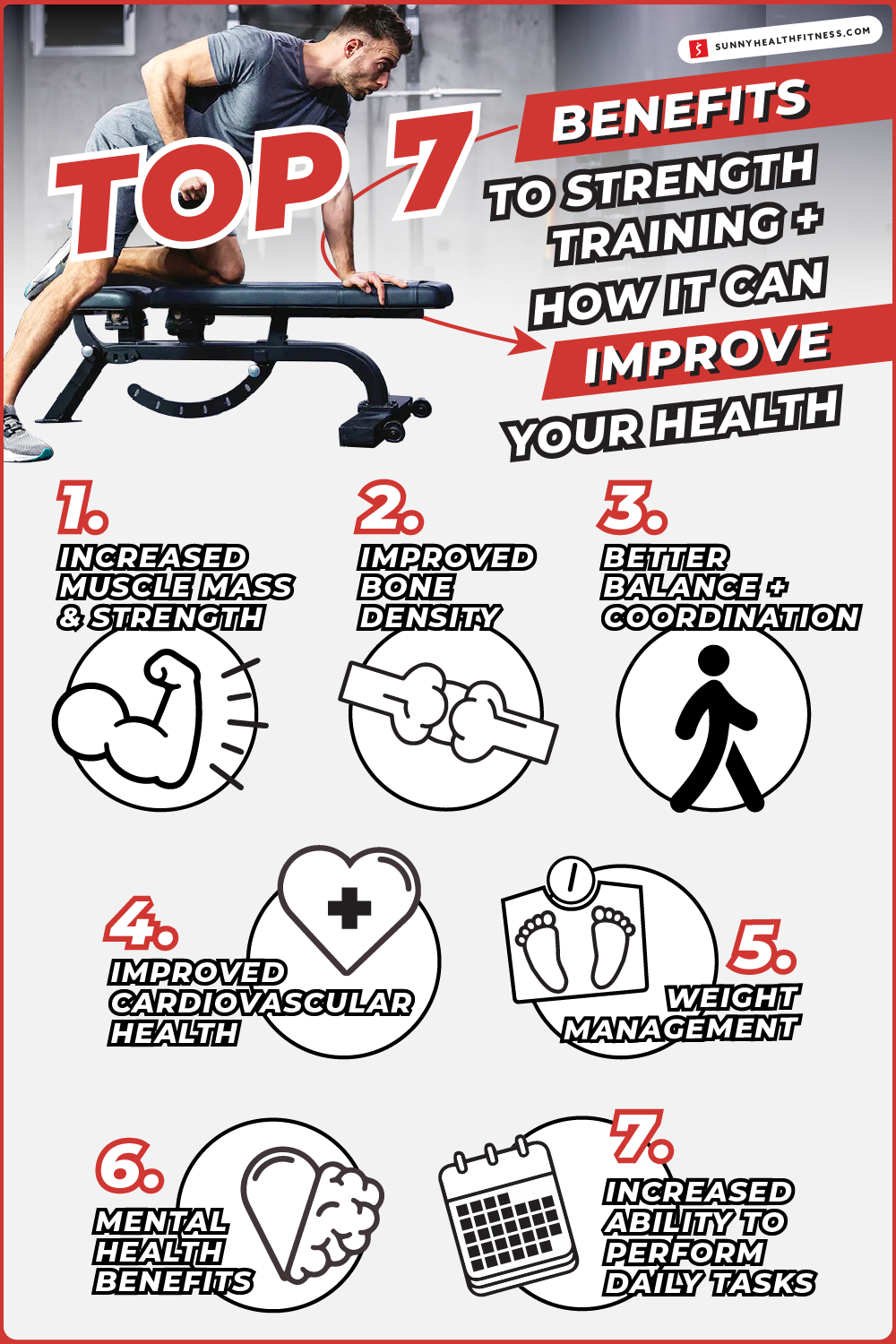


Mark Ludas CPT is a NASM-certified personal trainer with a decade of experience in the fitness industry. After an asthmatic childhood, Mark discovered his natural aptitude for fitness in his late twenties. At age 36, he accomplished a 300+ pound conventional deadlift and 280+ high-bar squat as a 6’5” 170-pound ectomorph on a fully vegan diet, all after just one year of proper self-programming. Mark is the founder of Resistance Quest Fitness, established in 2016. Additionally, he is a writer, actor, model, and musician. Find him on Instagram, Facebook, Youtube, and at www.resistancequest.com.

